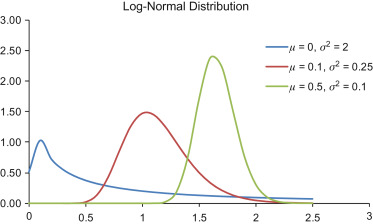Opened March 04, 2021. Last updated by The POOG on March 04, 2021.
A Non-Pharmaceutical Intervention (NPI) is a device or procedure used to control the spread of disease infection, other than a pharmaceutical such as an antibiotic, drug, or vaccine. Current examples are hand washing, social distanceing, mask wearing, lock-downs, and quarantines.
I would such that individuals and societies have a natural degree of NPI use. For example, if someone is coughing vigorously, we try and move away from them (social distancing). If we feel particularly ill, we will confine ourselves to our home (quarantine). We cover our face when we sneeze or cough (mask wearing). We wash our hands when using public washrooms and avoid touching fixtures. The degree of personal NPI use varies with the individual, but we might determine societal or cultural norms.
A typical disease progression case distribution follows a log-normal distribution curve[1] which looks like figure 1.

More Restrictive NPIs (MrNPI)
These include measures such as lock-downs, facility closures, quarantines, and related measures that generally restrict movement. A recent study by Bendavid et al found them not significantly effective[3], emphasis added.
While small benefits cannot be excluded, we do not find significant benefits on case growth of more restrictive NPIs. Similar reductions in case growth may be achievable with less- restrictive interventions.
Bendavid (2021)[3].
References
- Limpert E, Stahel WA, and Abbt M. Log-normal Distributions across the Sciences: Keys and Clues. BioScience, Vol 51 No. 51, pp. 341-352. May, 2001. PDF.
- Kissell R, and Poserina J. Chapter 4 – Advanced Math and Statistics. Optimal Sports Math, Statistics, and Fantasy, 2017. PDF.
- Bendavid E, Oh C, Bhattacharya J, and Ioannidis JPA. Assessing mandatory stay‐at‐home and business closure effects on the spread of COVID‐19. ESCI. January 05, 2021. PDF.